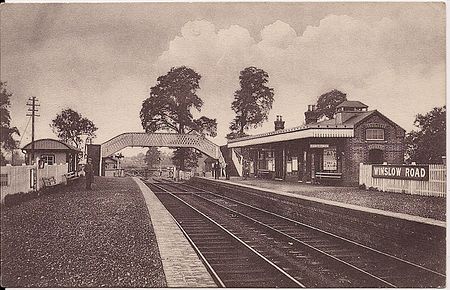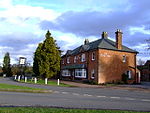Winslow Road railway station
Disused London Underground stationsDisused railway stations in BuckinghamshireFormer Metropolitan and Great Central Joint Railway stationsMetropolitan line stationsRailway stations in Great Britain closed in 1936 ... and 2 more
Railway stations in Great Britain opened in 1868Use British English from January 2017

Winslow Road railway station served the village of East Claydon near Winslow to the north of Quainton in Buckinghamshire, England. It was the second station to serve the town after Winslow on the Varsity Line.
Excerpt from the Wikipedia article Winslow Road railway station (License: CC BY-SA 3.0, Authors, Images).Winslow Road railway station
East Claydon Road,
Geographical coordinates (GPS) Address External links Nearby Places Show on map
Geographical coordinates (GPS)
| Latitude | Longitude |
|---|---|
| N 51.9277 ° | E -0.9104 ° |
Address
Winslow Road
East Claydon Road
MK18 3NF
England, United Kingdom
Open on Google Maps








